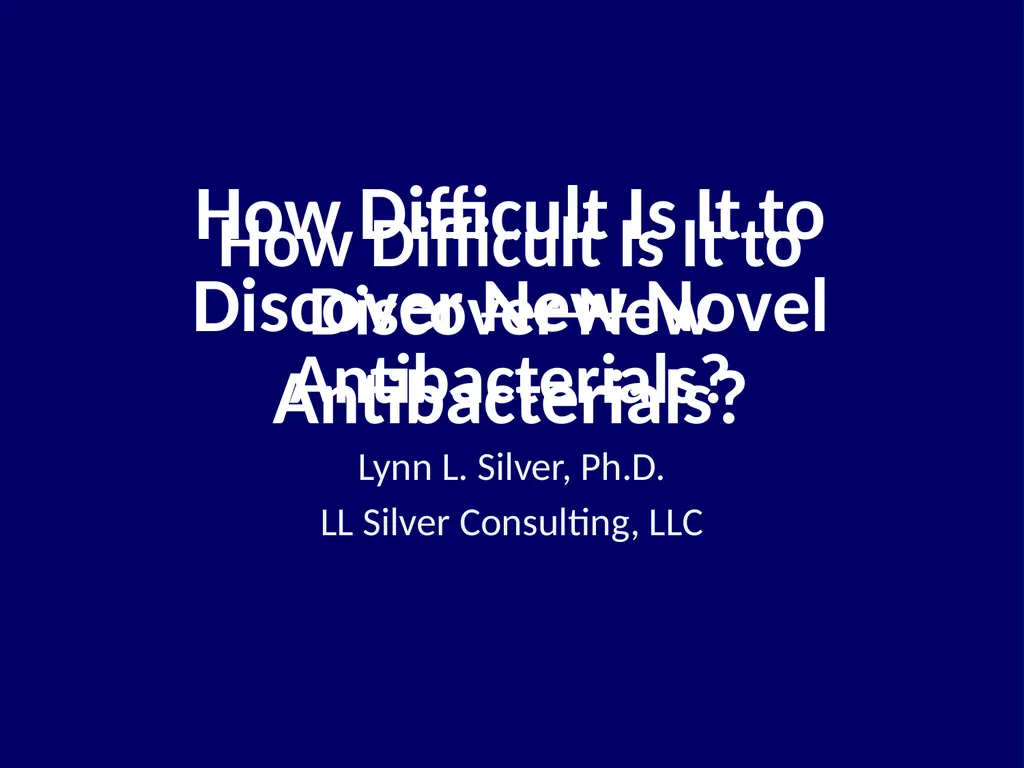
How Difficult Is It to Discover New Novel
Author: stefany-barnette | Published: 2025-06-23
Description: How Difficult Is It to Discover New Novel Antibacterials? How Difficult Is It to Discover New Antibacterials? Lynn L. Silver, Ph.D. LL Silver Consulting, LLC Antibacterials at FDA 2000-2011 Discovery Timeline fusidic acid polymyxin
Download Presentation
Download the PPT/PDF: Download
Transcript:
Loading transcript…